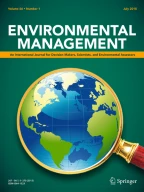Abstract
We investigated the use of Landsat ETM+ images in the monitoring of turbidity, colored dissolved organic matter (CDOM), and Secchi disk transparency (ZSD) in lakes of two river basins located in southern Finland. The ETM+ images were acquired in May, June, and September 2002 and were corrected for atmospheric disturbance using the simplified method of atmospheric correction (SMAC) model. The in situ measurements consisted of water sampling in the largest lake of the region, routine monitoring results for the whole study area, and ZSD observations made by volunteers. The ranges of the water quality variables in the dataset were as follows: turbidity, 0.6–25 FNU; absorption coefficient of CDOM at 400 nm, 1.0–12.2 m−1; ZSD, 0.5–5.5 m; and chlorophyll a concentration, 2.4–80 μg L−1. The estimation accuracies of the image-specific empirical algorithms expressed as relative errors were 23.0% for turbidity, 17.4% for CDOM, and 21.1% for ZSD. If concurrent in situ measurements had not been used for algorithm training, the average error would have been about 37%. The atmospheric correction improved the estimation accuracy only slightly compared with the use of top-of-atmospheric reflectances. The accuracy of the water quality estimates without concurrent in situ measurements could have been improved if in-image atmospheric parameters had been available. The underwater reflectance simulations of the ETM+ channel wavelengths using water quality typical for Finnish lakes (data from 1113 lakes) indicated that region-specific algorithms may be needed in other parts of the country, particularly in the case of ZSD. Despite the limitations in the spectral and radiometric resolutions, ETM+ imagery can be an effective aid, particularly in the monitoring and management of small lakes (<1 km2), which are often not included in routine monitoring programs.







Similar content being viewed by others
References
Brivio PA, Giardino C, Zilioli E (2001) Determination of chlorophyll concentration changes in Lake Garda using an image-based radiative transfer code for Landsat TM images. International Journal of Remote Sensing 22:487–502
Cox RM, Forsythe RD, Vaughan GE, Olmsted LL (1998) Assessing water quality in Catawba River reservoirs using Landsat thematic mapper satellite data. Lake and Reservoir Management 14:405–416
Dekker AG (1993) Detection of optical water quality parameters for eutrophic waters by high resolution remote sensing. PhD thesis, Vrije Universiteit, Amsterdam
Dekker AG, Vos RJ, Peters SWM (2002) Analytical algorithms for lake water TSM estimation for retrospective analysis of TM and SPOT sensor data. International Journal of Remote Sensing 23:15–36
EN 27027 (1994) Water quality—determination of turbidity. European Committee for Standardization
Gordon HR, Brown OB, Jacobs MM (1975) Computed relationships between the inherent and apparent optical properties of a flat, homogenous ocean. Applied Optics 14:417–427
Hilsenrath E, Cebula RP, Deland MT, Laamann K, Taylor S, Wellemeyer C, Bhartia PK (1995) Calibration of the NOAA-11 solar backscatter ultraviolet (SBUV/2) ozone data set from 1989 to 1993 using in-flight calibration data and SSBUV. Journal of Geophysical Research 100:1351–1366
Hirtle H, Rencz A (2003) The relation between spectral reflectance and dissolved organic carbon in lake water: Kejimkujik National Park, Nova Scotia, Canada. International Journal of Remote Sensing 23:953–967
ISO 10260 (1992) Water quality—measurement of biochemical parameters—spectrometric determination of the chlorophyll a concentration. International Organization for Standardization
Jerlov NG (1976) Marine optics. Elsevier, Amsterdam
Kallio K, Kutser T, Hannonen T, Koponen S, Pulliainen J, Vepsäläinen J, Pyhälahti T (2001). Retrieval of water quality variables from airborne spectrometry of various lake types in different seasons. The Science of the Total Environment 268:59–77
Kallio K (2006) Optical properties of Finnish lakes estimated with simple bio-optical models and water quality monitoring data. Nordic Hydrology 37:183–204
Kallio K, Pulliainen J, Ylöstalo P (2005) MERIS, MODIS and ETM channel configurations in the estimation of lake water quality from subsurface reflectance with semi-analytical and empirical algorithms. Geophysica 41:31–55
Kirk J (1984) Dependence of relationship between inherent and apparent optical properties of water on solar altitude. Limnology and Oceanography 29:350–356
Kloiber SM, Brezonik PL, Olmanson LG, Bauer ME (2002a) A procedure for regional lake water clarity assessment using Landsat multispectral data. Remote Sensing of Environment 82:38–47
Kloiber SM, Brezonik PL, Bauer ME (2002b) Application of Landsat imagery to regional-scale assessment of lake clarity. Water Research 36:4330–4340
Kutser T, Pierson D, Tranvik L, Reinart A, Sobek S, Kallio K (2005a) Estimating the colored dissolved organic matter absorption coefficient in lakes using satellite remote sensing. Ecosystems 8:709–720
Kutser T, Pierson DC, Kallio KY, Reinart A, Sobek S (2005b) Mapping lake CDOM by satellite remote sensing. Remote Sensing of Environment 94:535–540
MacFarlane N, Robinson IS (1984) Atmospheric correction of Landsat MSS data for a multidate suspended sediment algorithm. International Journal of Remote Sensing 5:561–576
Rahman H, Dedieu G (1994) SMAC: a simplified method for the atmospheric correction of satellite measurement s in the solar spectrum. International Journal of Remote Sensing 15:123–143
Thiemann S, Kaufmann H (2000) Determination of chlorophyll content and trophic state of lakes using field spectrometer and IRS-1C satellite data in the Mecklenburg Lake District, Germany. Remote Sensing of Environment 73:227–235
Vincent RK, Qin X, McKay RML, Miner J, Czajkowski K, Savino J, Bridgeman T (2004) Phycocyanin detection from Landsat TM data for mapping cyanobacterial blooms in Lake Erie. Remote Sensing of Environment 89:381–392
Vuoristo H (1998) Water quality classification of Finnish inland waters. European Water Management 1:35–41
Acknowledgment
This study was partly funded by the Karjaanjoki LIFE project (INNOWA, LIFE00 ENV/FIN/000668).
Author information
Authors and Affiliations
Corresponding author
Rights and permissions
About this article
Cite this article
Kallio, K., Attila, J., Härmä, P. et al. Landsat ETM+ Images in the Estimation of Seasonal Lake Water Quality in Boreal River Basins. Environmental Management 42, 511–522 (2008). https://doi.org/10.1007/s00267-008-9146-y
Received:
Revised:
Accepted:
Published:
Issue Date:
DOI: https://doi.org/10.1007/s00267-008-9146-y



